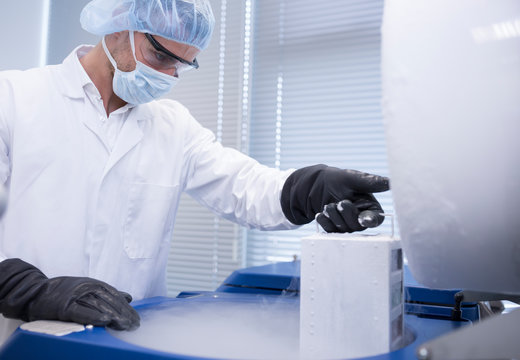Cryogenic handling plays a crucial role in modern science and industry, enabling the safe management of materials at extremely low temperatures. These materials, often in liquid form, require specialized equipment and techniques to maintain their stability and safety. From medical research to aerospace, cryogenics underpins many cutting-edge technologies. This article explores the science behind cryogenic handling, essential techniques, safety protocols, and real-world applications.
What is Cryogenic Handling?
Cryogenic handling refers to the manipulation, storage, and transportation of substances at cryogenic temperatures—typically below -150°C (-238°F). At these temperatures, gases like nitrogen, oxygen, hydrogen, helium, and argon become liquids, and managing them requires specific engineering and safety standards.
The Science Behind Cryogenics
At cryogenic temperatures, materials undergo unique physical and chemical transformations. The behavior of matter at these low temperatures affects viscosity, thermal conductivity, and density. These changes necessitate specialized approaches to storage and handling:
-
Boiling Point Reduction: Gases liquefy at lower pressures and temperatures.
-
Thermal Contraction: Materials contract drastically, influencing container design.
-
Superfluidity and Quantum Effects: Especially in helium, cryogenics reveals exotic phenomena relevant to quantum physics.
Understanding these scientific principles is vital for developing effective cryogenic systems.
Key Techniques in Cryogenic Handling
1. Cryogenic Storage Systems
-
Dewars: Insulated containers that reduce heat transfer and prevent rapid evaporation of cryogenic liquids.
-
Cryogenic Tanks: Used in industrial settings for bulk storage with multiple safety and control features.
-
Cryocoolers and Freezers: Maintain ultra-low temperatures in laboratory and medical applications.
2. Transfer Techniques
-
Transfer Lines: Vacuum-insulated piping is used to minimize heat gain during transfer.
-
Cryogenic Pumps: Designed to handle low-temperature fluids without mechanical damage or excessive boil-off.
3. Pressure and Temperature Control
Monitoring and regulating pressure and temperature is essential to prevent over-pressurization and loss of containment. Sensors and automated controls are integral to modern cryogenic systems.
4. Personal Protective Equipment (PPE)
Operators must wear specialized PPE such as:
-
Cryogenic gloves
-
Face shields
-
Lab coats or aprons
-
Insulated footwear
5. Ventilation and Leak Detection
Cryogenic gases can displace oxygen, creating an asphyxiation hazard. Adequate ventilation and oxygen sensors are necessary in enclosed spaces.
Safety Protocols in Cryogenic Handling
Due to the extreme cold and potential for rapid vapor expansion, strict safety protocols are non-negotiable:
-
Training: Only qualified personnel should manage cryogenic materials.
-
Material Compatibility: Cryogenic fluids can embrittle certain materials; proper selection of stainless steel, aluminum, or other cryo-compatible alloys is crucial.
-
Pressure Relief Valves: These prevent explosions caused by pressure buildup.
-
Emergency Response Plans: Include first-aid procedures for frostbite and guidelines for dealing with leaks or spills.
Applications of Cryogenic Handling
1. Medical and Biological Sciences
-
Cryopreservation: Used to store cells, tissues, and reproductive materials (sperm, eggs) for long periods.
-
MRI Machines: Utilize liquid helium to cool superconducting magnets.
-
Vaccine Storage: Cryogenic handling played a vital role in preserving COVID-19 vaccines at ultra-low temperatures.
2. Aerospace and Aviation
-
Rocket Propellants: Liquid hydrogen and oxygen are commonly used in rocket engines.
-
Space Simulation Chambers: Cryogenic systems replicate the vacuum and cold of outer space for testing components.
3. Electronics and Quantum Computing
-
Superconductors: Require cryogenic environments to maintain zero electrical resistance.
-
Quantum Computers: Operate at cryogenic temperatures to achieve quantum coherence.
4. Food and Beverage Industry
-
Flash Freezing: Liquid nitrogen enables rapid freezing, preserving food texture and quality.
-
Packaging and Storage: Dry ice and liquid nitrogen are used for temperature control during transport.
5. Energy Sector
-
Liquefied Natural Gas (LNG): Natural gas is liquefied at cryogenic temperatures to facilitate easier storage and transport.
-
Hydrogen Fuel Cells: Liquid hydrogen storage systems are becoming critical for clean energy solutions.
Innovations and Future Trends
Cryogenic handling is advancing rapidly with improvements in automation, remote monitoring, and material science. Emerging fields like cryogenic 3D printing, quantum networking, and deep space exploration are pushing the boundaries of what cryogenic technology can achieve.
Some key future directions include:
-
Development of more efficient cryocoolers.
-
Safer, lighter composite storage tanks.
-
Integration with IoT for predictive maintenance.
Conclusion
Cryogenic handling is a sophisticated science that enables many of the technologies we rely on today—from life-saving medical procedures to space exploration. Mastery of cryogenic techniques and safety protocols is essential for professionals across multiple industries. As demand for cryogenics grows, particularly in energy and high-tech fields, the importance of innovation and education in cryogenic handling will continue to rise.

Comments
Post a Comment